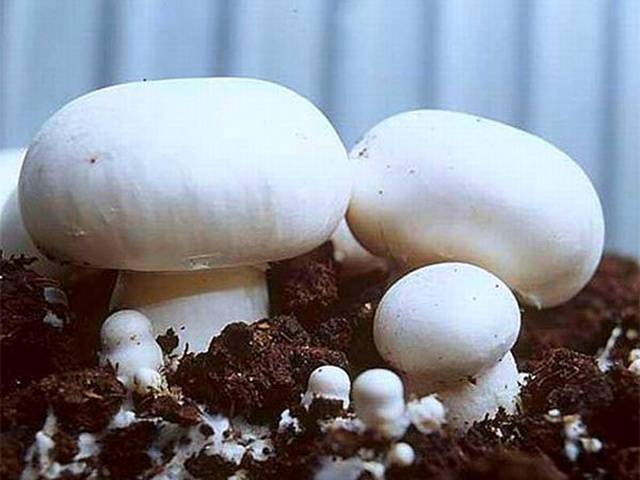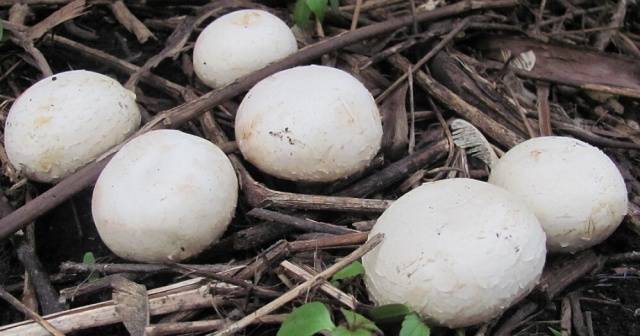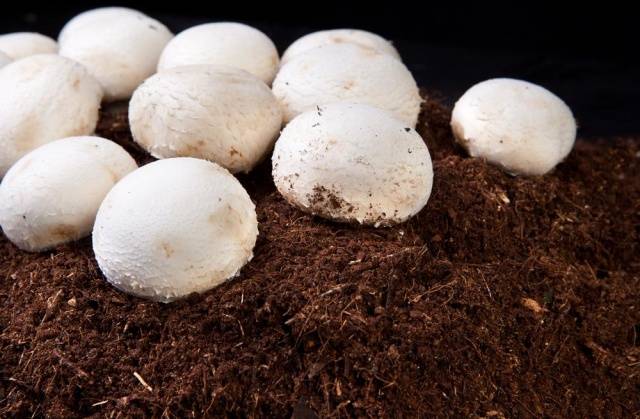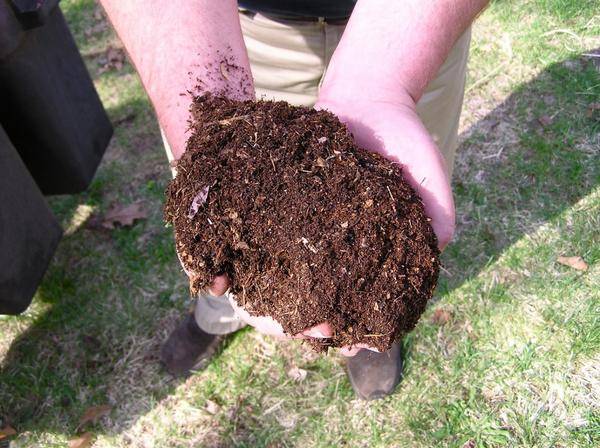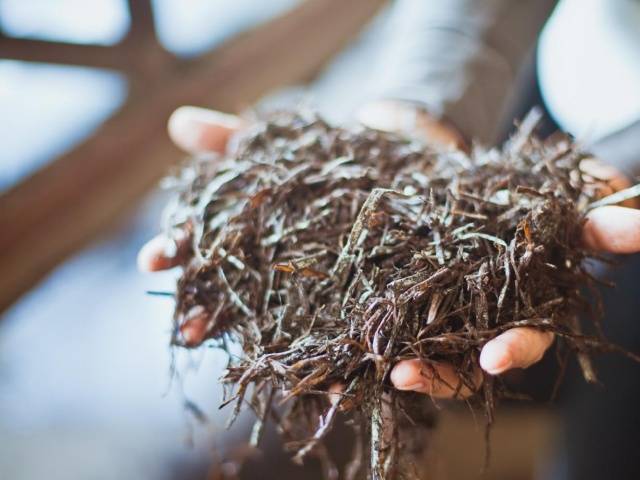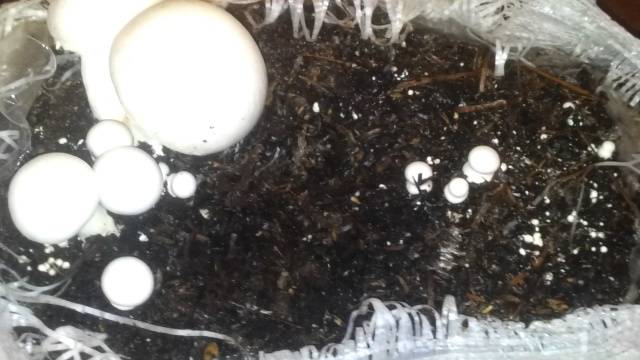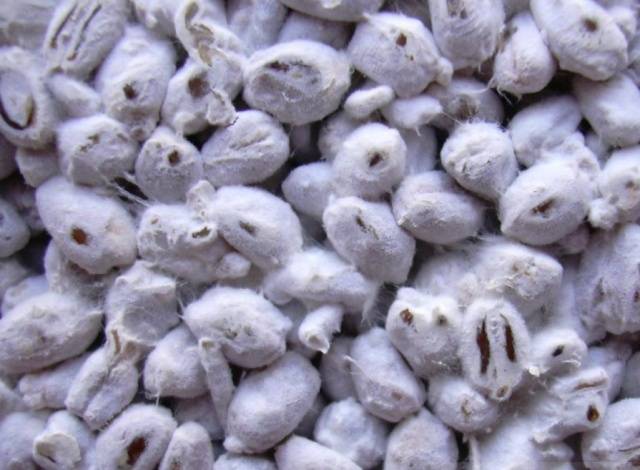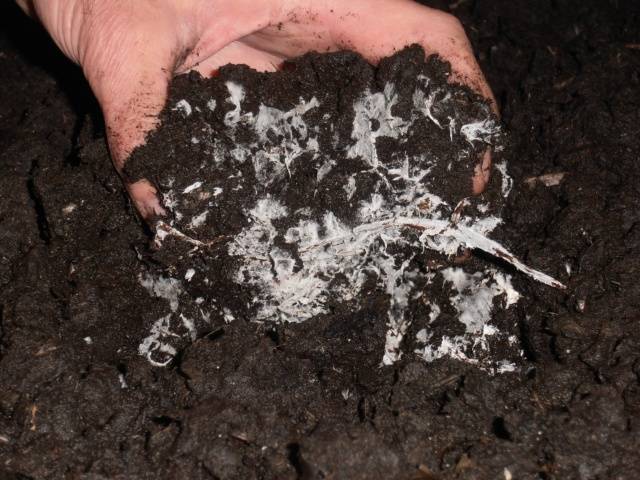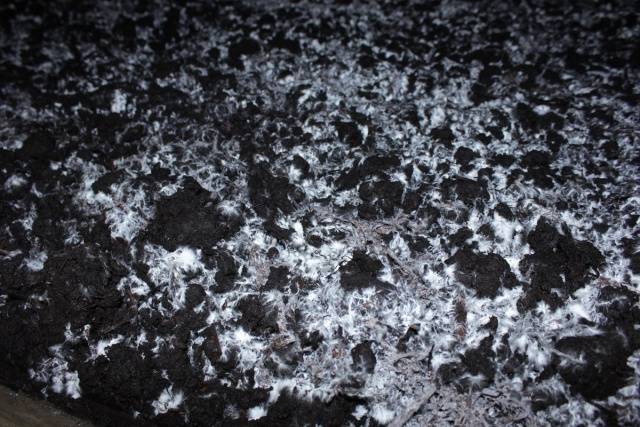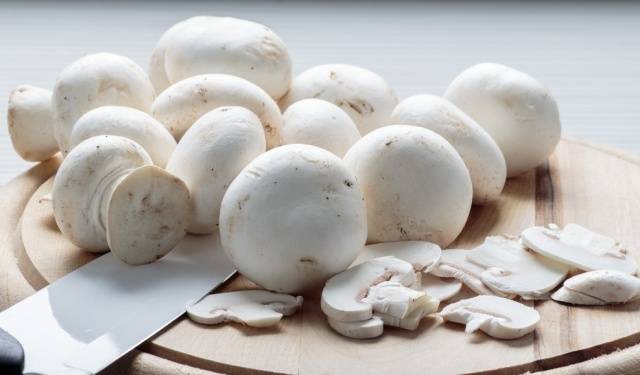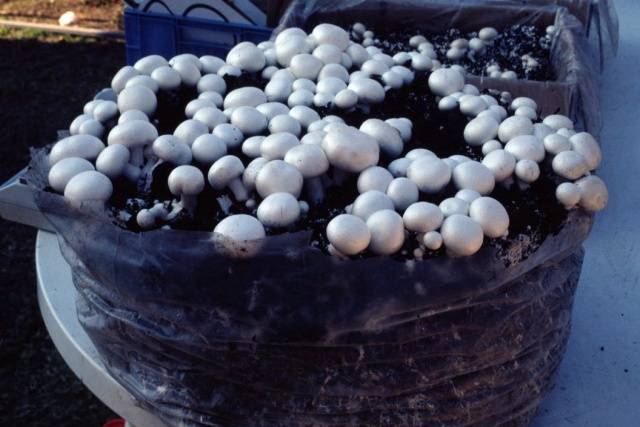Content
Champignon mushrooms are a popular modern product that can be found in any market or on supermarket shelves. Champignons are valued for their nutritional value and “signature” mushroom taste, unlike forest mushrooms, they are available all year round and are quite inexpensive. It is not surprising that the issue of growing mushrooms at home worries many, but not all owners know where to start this business, and what method of mushroom cultivation to prefer.
This article will be devoted to how to grow champignons at home. Here you can also learn how to plant and how to store mushrooms, as well as what methods of growing mushrooms are considered the most promising.
Growing champignons at home for beginners
Today mushroom growing is rapidly developing as a private business. An increasing number of farmers are turning their private farms into huge myceliums that bring a stable and considerable income.
It is not necessary to create whole plantations, it is quite possible to grow mushrooms for your own purposes and the needs of your family. This mushroom is very unpretentious, in nature it is distributed practically all over the world. Therefore, it is quite possible to grow champignons in an apartment or a basement of a private house; greenhouses and garden beds are often used for these purposes - the mushroom develops well in any environment, but for this it needs to create suitable conditions.
Step by step about how to grow mushrooms at home will be described below.
Cooking mushroom substrate
You need to start growing mushrooms by preparing the soil for them. Champignons grow almost everywhere, but in order to get a really good harvest, you need to prepare a special substrate for these mushrooms.
The mushroom substrate should be prepared in the following proportions:
- 100 kg of straw;
- 400 kg of horse manure;
- 2 kg superphosphate;
- 2 kg of urea;
- 5 kg of chalk;
- 7.5 kg of plaster;
- 350 liters of water.
From the specified amount of ingredients, about 300 kg of mushroom substrate should be obtained. From this compost, you can create a full-fledged mycelium with a size of three square meters.
Each ingredient is extremely important and greatly affects the quality of the finished compost. So, manure for growing champignons should be exactly horse manure - in this case, the yield of mycelium will be maximum. Of course, you can replace it with bird droppings or mullein, but you need to understand that then the mushroom harvest will be much lower than the declared one.
As for straw, it is recommended to use straw of winter crops: wheat or rye for these purposes. In extreme cases, it is allowed to replace this raw material with fallen leaves or sawdust. It should be understood that this will also affect the yield, in addition, the farmer must be absolutely sure that the raw materials for the compost are clean: not infected with viruses or diseases, have no traces of rot, mold, and insect pests.
The process of preparing compost for mycelium consists of several stages:
- The straw must be soaked in water, choosing a container that is suitable for this. To disinfect the straw, you can steam it with boiling water.
- Select a site for compost fermentation on the site. It should be borne in mind that a strong unpleasant odor will be emitted in the process, therefore it is better to deal with the substrate away from living quarters and do it outdoors. But there must be a cover over the compost.
- Stack the straw and manure in layers, alternating between these two components. As a result, 3-4 layers of each element should be obtained, and the height of the pile will be about 150 cm.The width of the pile of compost for mushrooms will turn out to be no more than 120 cm.
- When each layer of straw is laid out, it is additionally moistened using urea and superphosphate (about 0.5 kg per pile). These substances additionally stimulate the fermentation of manure.
- The resulting pile must be thoroughly mixed with a pitchfork at least four times. At the first stirring, it is worth adding gypsum, during the second stirring, the remaining superphosphate is added, the third stirring is accompanied by the addition of the last portion of gypsum. As a result, a homogeneous, well-moistened mass should be obtained.
- The fact that the substrate for the mushrooms is prepared correctly should be evidenced by the increased temperature inside the compost. By the third day it is 65-70 degrees, which indicates that the mushroom substrate is “burning”. This is also evidenced by the characteristic ammonia smell and the release of a large amount of moisture (it is worthwhile to think over the system for its removal in advance).
- Fermentation of the mushroom substrate will take about twenty days. The fact that the compost is ready can be found by lowering the temperature inside the pile to 20-25 degrees.
A high-quality substrate for mushrooms, including champignons, should be thick, loose, not sticky to your hands and have a brown color. When pressed, the compost should spring back, and it smells like earth, not ammonia or other harsh aromas.
Selection and laying of mycelium
Growing mushrooms at home or in production is impossible without another important component - mycelium. The mycelium is, one might say, the "seeds" of mushrooms that were grown in sterile laboratory conditions, thereby significantly increasing the percentage of germination and protecting the planting material from various infections.
You need to buy champignon mycelium only from trusted manufacturers, suppliers of which are laboratories with specialized equipment. It is better to start with a small batch of mycelium, and after getting a good result from the same seller, order more planting material for homemade mushrooms.
There are two types of mushroom mycelium:
- grainpacked in plastic bags and has a shelf life of up to six months in the refrigerator;
- compost mycelium is sold in glass containers, which significantly reduces the contact of the material with the environment and extends its shelf life (at zero temperature, such mycelium can be stored for about a year).
The consumption of mushroom mycelium is also different: per square meter of mycelium, 400 grams of grain or 500 grams of compost mycelium will be required.
You need to sow mushroom mycelium like this:
- first disinfect the substrate by treating it with hot steam or spilling it with boiling water;
- when the compost has cooled, it is laid out in wooden boxes or on shelves, making sure that the substrate layer is 30 cm;
- using a small spatula or a wide knife, raise the upper layer of the substrate, in a checkerboard pattern performing holes, the depth of which is 3-4 cm, and the distance between them is 20 cm;
- a handful of grain mycelium or a portion of compost, which is equal in size to a chicken egg, is placed in each hole;
- carefully cover the well with the previously raised substrate.
Care for mushroom mushrooms
When breeding champignons, you need to be prepared for daily work with mycelium, because care and conditions of detention are very important for these mushrooms.
You can grow mushrooms at home in any room with a stable temperature and high humidity. Cellars and cellars meet these requirements most of all, therefore, mushrooms are usually grown here.
In order for champignon spores to germinate, you need to observe the following regime:
- Support humidity at the level of 70-85%. However, you cannot water the mycelium, moisten the substrate directly. You can raise the humidity in the room in the following ways: cover the myceliums with burlap or old newspapers and moisten them with a spray bottle as they dry; water the floors and walls in the basement; install special devices - humidifiers or sprayers.
- Inside the substrate must be respected temperature at the level of 20-27 degrees... This is very important, therefore, the temperature is measured regularly, in case of any deviations from the norm, they try to equalize it. If it is too hot in the basement with mushrooms, it is ventilated, when it gets cool, heaters or lamps are turned on.
After 8-12 days after laying the mycelium, it is necessary to cover the mycelium with a covering soil substrate. It can be prepared from a portion of peat diluted with chalk in a 9: 1 ratio, or you can take four parts of garden soil, five parts of peat and one part of chalk. Each square of mycelium is covered with 50 grams of such a substrate.
Growing up, the mushroom spawn will emerge on the surface of the substrate, manifesting itself in the form of thin silvery-white filaments. Five days after adding the covering substrate, you need to slightly lower the temperature - now the mushrooms need 12-17 degrees.
The cover soil is constantly moistened, trying not to wet the main substrate. In a room with mushrooms, you need to provide good ventilation.
How to collect and store mushrooms at home
After 3-4 months, you can harvest the first crop of homemade champignons. You can collect all young mushrooms, which have not yet torn the connecting membrane (between the stem of the champignon and its cap). Old, lethargic, or damaged mushrooms can be hazardous to your health, so it is best to throw them away.
You cannot cut the champignons with a knife, as it is customary to do with forest mushrooms. Ripe champignons must be carefully twisted out of the substrate, sprinkle the remaining wound with earth and slightly moisten.
You need to harvest every 5-7 days, if the mycelium was grown according to the technology, it will bear fruit for 8-12 weeks. Each meter of mycelium will give from 5 to 12 kg of mushrooms, while most of the harvest will fall on the first harvest.
It is not enough to grow mushrooms yourself, you also need to know how to store them. Mushrooms are stored in one of the following ways:
- in the fridge;
- by freezing (whole or shredded);
- dried in the oven or in special dryers for vegetables and fruits;
- pickled or canned.
Growing mushrooms is considered a fairly profitable business, especially for farms, because they will not need to spend money on buying raw materials for the substrate.
How best to grow mushrooms at home
There are many methods of growing these mushrooms, but not all of them are applicable in a private environment.
It is customary to grow champignons at home in the following ways:
- On the ridges of the substratethat are laid on the floor of the basement or barn. This method is good at minimal cost, but there is a mine - a high risk of fungus infection with mold, since the plantings are very low.
- Most often, champignons are grown on shelves in the same basements or outbuildings. This is what the Dutch do, and they get up to 18 kg of mushrooms from each meter.
- It is convenient to grow champignons for your own needs. in polyethylene bags with holes... They take up little space, as they are arranged vertically, and planting care will be very simple.
- There are special briquettes or blocks from a pressed substrate for mushrooms. They are expensive, but mushroom yields are consistently high.
Growing champignons at home can bring good profits and become a profitable family business. It's worth starting, if only in order to provide yourself with a hearty and tasty product, as well as to master something new and unusual.
